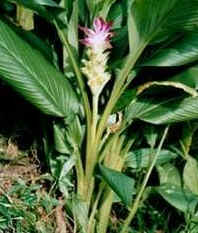

| Materials | Method of preparation | How to use | Target pests |
| Ginger rhizome extract (Sridhar; et. al. 2002: p. 33) 50 grams of ginger 12 ml of soap 3 liters of water Grinder Strainer Pail 4 kg of ginger are needed to spray 0.4 ha |
Grind ginger and make into paste. Mix with water. Add soap. Stir and strain. |
Spray on infested plants thoroughly. If there is no sprayer, make soft brushes out of plant straw or twigs. Make sure to wet all the infested plant parts. |
American bollworm Aphids Plant hoppers Thrips Whitefly Root knot nematode Brown leaf spot of rice Mango anthracnose Yellow vein mosaic |
| Ginger, garlic, and chilli extract (Sridhar; et. al. 2002: p. 33) 25 grams of ginger 50 grams of garlic 25 grams of green chili 10 ml of kerosene 12 ml of soap 3 liters of water Grinder Pail 1 kg garlic œ kg ginger and œ chili are needed for 0.4 ha |
Soak garlic in kerosene overnight. Grind and make into a paste. Add 50 ml water to chili, grind, make into a paste. Grind ginger and make into a paste as well. Mix all ingredients into the water. Add soap. Filter the extract. Stir well before spraying. |
Spray on infested plants thoroughly. |
Aphids Armyworm Bollworm Caterpillars Fruit borer Leaf miner Shoot borer Thrips Whiteflies |
| Ginger powder extract (Stoll, 2002: p. 223) 20 grams of ginger powder 1 liter of water Pail |
Add powder to water. Mix well. |
n Spray on infested plants thoroughly. |
Powdery mildew Root rot Fungal leaf blight |